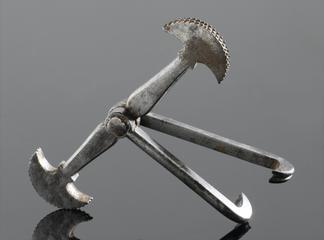Hippopotamus ivory teeth, upper denture, England
Upper denture of hippopotamus ivory teeth, England.
More
The best dentists produced fine work. These carefully carved dentures are made of hippopotamus ivory. This is denser than both elephant and walrus ivory. It is more hardwearing and appropriate for dental use. Ivory was difficult to clean. It deteriorated over time and smelt unpleasant. Only wealthy patients such as royalty and the upper classes could afford ivory dentures.
The porcelain display holders are carved with the motif of the Prince of Wales’ feathers. They are sometimes called Ruspini holders, after Bartholomew Ruspini (1728-1813). He trained as a dentist in France and moved to London in 1766. His patients included the Prince of Wales, later King George IV. The upper dentures (A71861) are pictured here with their lower denture partners (A71862).






